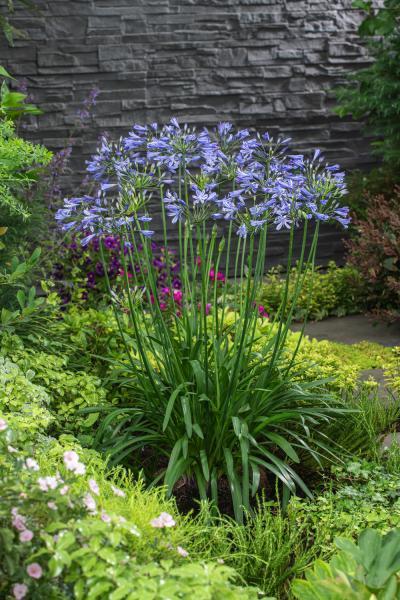Exactly how to Plant and Maintain Agapanthus in Your Garden
Mastering the Art of Agapanthus Treatment: Important Steps for Healthy And Balanced Development and Lively Flowers
In the realm of gardening, the cultivation of agapanthus stands as a satisfying endeavor for those who seek to nurture these classy flowering plants. From picking the right selection to mastering trimming techniques, the journey in the direction of growing flourishing agapanthus plants is complex and holds the vital to unlocking the full possibility of these botanical gems.
Selecting the Right Agapanthus Range

When choosing the ideal Agapanthus range for your yard, consider elements such as environment suitability, bloom color, and growth routine. Additionally, consider the environment in your region to make sure the Agapanthus range you choose can thrive in your certain conditions. Recognizing the growth behavior of different Agapanthus selections is important for correct placement within your yard.
Perfect Planting Conditions
Taking into consideration the optimal environmental demands is crucial for successful Agapanthus growing. Agapanthus plants are delicate to cool temperatures and ought to be secured from frost during wintertime months.
To make sure healthy and balanced development and lively flowers, plant Agapanthus bulbs at a depth of about 2-4 inches and space them 8-12 inches apart. Mulching around the base of the plants helps retain dampness and subdues weed development.
Watering and Feeding Tips
Preserving correct moisture degrees and giving essential nutrients are crucial elements in the treatment routine for Agapanthus plants. It is crucial to strike a balance when it comes to watering Agapanthus. If overwatered, these plants like consistently wet dirt yet are prone to root rot. During the growing season, water deeply when a week, guaranteeing the dirt is well-draining to stop waterlogging. In hotter environments or during periods of drought, even more regular watering may be required to maintain the dirt evenly moist. Nonetheless, lower watering in the wintertime to stop water logged problems.
Fertilizing Agapanthus is necessary for promoting healthy and balanced growth and respected blossoms. Apply a balanced plant food, such as a 10-10-10 formula, in the very early spring as new development arises. By following these watering and fertilizing ideas, you can guarantee your Agapanthus plants thrive and create vivid, long-lasting blossoms.
Pruning Methods for Agapanthus
Trimming Agapanthus plants at the proper times and with appropriate strategies is important for maintaining more helpful hints their health and promoting optimal growth and flowering. The perfect time to prune Agapanthus is in late winter season or early spring before new development arises.
For flowered stems, wait until the blossoms have actually perished and after that cut them back to the base. This not just cleans the plant's look however likewise motivates the advancement of new blossom buds. Deadheading invested flowers can also reroute the plant's energy into generating even more blooms instead of establishing seeds. Nonetheless, if you intend to gather seeds for propagation, leave some flowers to fully grown and completely dry on the plant.
Bear in mind to make use of tidy, sharp tools to make accurate cuts and lower the threat of introducing diseases. Agapanthus. Normal pruning will aid keep your Agapanthus looking cool and healthy and balanced while making sure an abundant display screen of attractive flowers
Managing Common Bugs and Diseases
After ensuring proper trimming techniques for Agapanthus, it is vital to resolve common parasites and illness that can influence the health and wellness and vigor of these plants. Agapanthus plants are normally hardy however can still succumb to particular problems. One typical pest that influences Agapanthus is the Agapanthus gall midge. This small, orange fly lays its eggs in the vegetation, resulting in distorted development and flower buds that fail to open up. To combat read review this pest, trim and destroy any type of affected plant components and consider using insecticidal soap.
One more common issue is fungal fallen leave area, which presents as dark lesions on the fallen leaves. To prevent fungal illness, make sure excellent air flow around the plants, prevent above watering, and get rid of any type of contaminated leaves without delay. Additionally, Agapanthus great post to read plants can experience root rot if they are planted in badly draining dirt. To stop this, plant Agapanthus in well-draining dirt and stay clear of overwatering. By being attentive and taking punctual action against parasites and diseases, you can aid your Agapanthus plants thrive and produce vivid blossoms.

Conclusion
Finally, grasping the art of agapanthus care entails picking the appropriate variety, giving suitable planting problems, appropriate watering and fertilizing, ideal trimming methods, and addressing usual bugs and illness. By following these essential actions, you can guarantee healthy development and dynamic blooms for your agapanthus plants. Bear in mind to on a regular basis keep track of and maintain your plants to advertise their overall health and long life.
To ensure healthy growth and dynamic blossoms, plant Agapanthus light bulbs at a depth of regarding 2-4 inches and room them 8-12 inches apart. By adhering to these watering and feeding suggestions, you can guarantee your Agapanthus plants prosper and produce lively, long-lasting blossoms.
One usual bug that influences Agapanthus is the Agapanthus gall midget. Additionally, Agapanthus plants can endure from origin rot if they are grown in improperly draining soil. By following these crucial actions, you can make sure healthy and balanced growth and vivid blooms for your agapanthus plants.